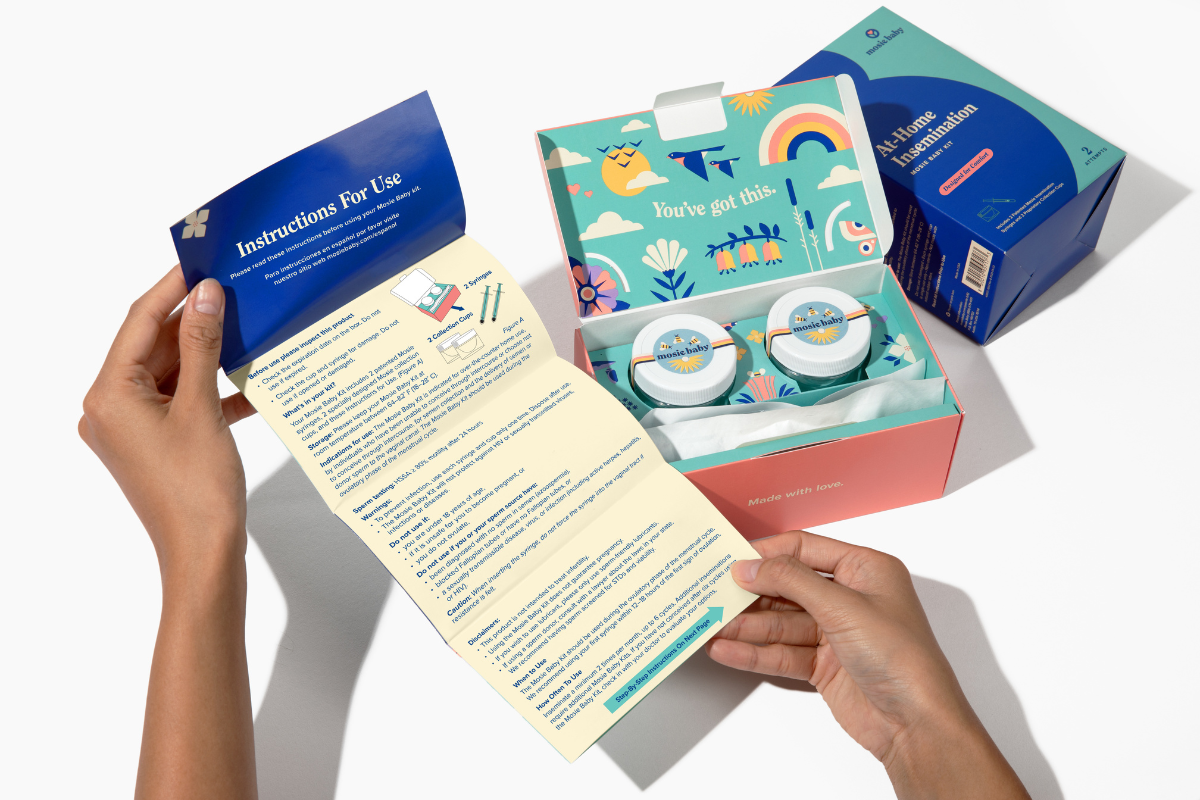In the realm of conception, there are many paths to parenthood. For some, the journey is a straightforward one. But for others, the road may have unexpected turns. Home insemination has emerged as an empowering option for those seeking to build their families.
This article provides a step-by-step guide to at-home insemination using Mosie Baby's approach. It also discusses important considerations, both practical and emotional.
We'll explore who home insemination works for, the essential tools of the process, factors to consider, and the emotional aspects of this conception method.
Understanding Home Insemination
Home insemination, also known asintravaginal insemination (IVI) is the process of introducing sperm into the vagina or near the cervix. This method can work for lots of families, including:
TheMosie Baby Kit is designed to be both comfortable and easy to use, and has helped over 100,000 families inseminate from the privacy of their own home. Each kit includes:
- 2 patented Mosie Insemination Syringes
- 2 Mosie Semen Collection Cups
- Supportive instructions
Preparing for Home Insemination
While the Mosie Baby kit streamlines the physical process, successful home insemination involves more than just the mechanics. Here are some crucial aspects to consider:
-
Timing is Key: Conception is most likely in the days leading up to ovulation. Usingovulation predictor kits or basal body temperature tracking can help pinpoint your fertile window.
-
Sperm Quality: Whether using donor sperm or sperm from a partner, ensure it is healthy and motile. Sperm banks screen and freeze sperm at peak viability. If using fresh sperm from a known donor or partner, consider getting a semen analysis to assess sperm quality.
-
Donor Considerations: If using donor sperm, establish clear communication and legal agreements regarding anonymity, parental rights, and medical history disclosure.
-
Medical Consultations: Discuss your plans with your healthcare provider. They can address any medical concerns, provide guidance on ovulation tracking, and offer emotional support.
-
Get Comfortable: One of the huge advantages of at-home insemination is the control you have over your environment. When inseminating at home, you’ll need to lie down for 15-30 minutes after inseminating. So, make yourself comfortable and honor this important step: Get a few pillows to prop up under your hips, put a glass of tea or water where you can reach it, and do whatever else will help you feel relaxed and comfortable.
The Home Insemination Process: A Step-by-Step Guide
Once you’ve finished preparing and you’re ready to inseminate, follow these key steps based on the instructions that come with the Mosie Baby Kit:
-
Collect the Sample: The sperm collection process will vary depending on whether you're using donor sperm or sperm from a partner. If using donor sperm, follow the thawing instructions provided by the sperm bank. Either transfer donor sperm or collect fresh sperm directly into the Mosie Baby collection
- Transfer Sample: Dip the end of the Mosie syringe into the collection cup and slowly pull the plunger to draw the sample into the syringe.
-
Insert Mosie: Get horizontal and comfortable. If possible, use pillows to raise your hips and legs slightly higher than your waist. Insert the Mosie syringe into your vagina just like you would a tampon — up to, but no further than, the handles. Fully push the plunger to release the sample. Gently remove the syringe immediately after the sample has been transferred.
-
Kick Back and Relax: After insemination, remain lying down and rest for 15-30 minutes, allowing the sperm to travel towards the egg.
Use the second syringe and cup within 18-24 hours. Once you’ve finished each insemination, dispose of the used syringe.
Emotional Considerations
The decision to inseminate at home can be a deeply personal one. It's essential to acknowledge the emotional journey that may accompany this process. Here are some tips for navigating the emotional landscape:
-
Open Communication: If you have a partner, ensure open and honest communication throughout the process. Discuss hopes, anxieties, and expectations.
-
Support System: Surround yourself with supportive loved ones who understand your decision and can offer encouragement.
-
Mental Health Support: Consider seeking professional counseling to address any emotional challenges that may arise.
-
Learn and Increase Confidence: Explorearticles on fertility, family building, and emotional well-being to gain insights and support.
Home insemination can be an empowering path to parenthood. By understanding the process, the tools available like the Mosie Baby Kit, and the emotional aspects, you can make informed decisions as you embark on the at home insemination process.

